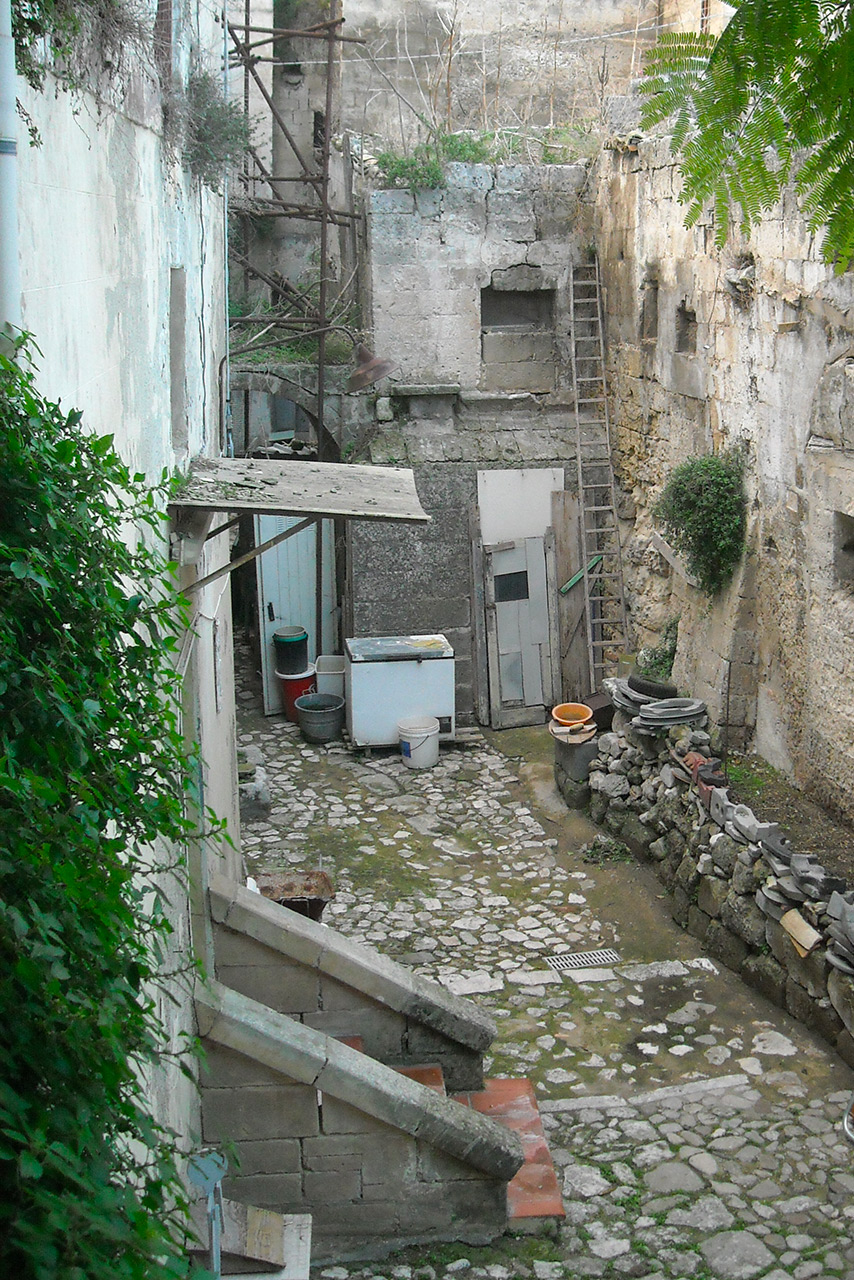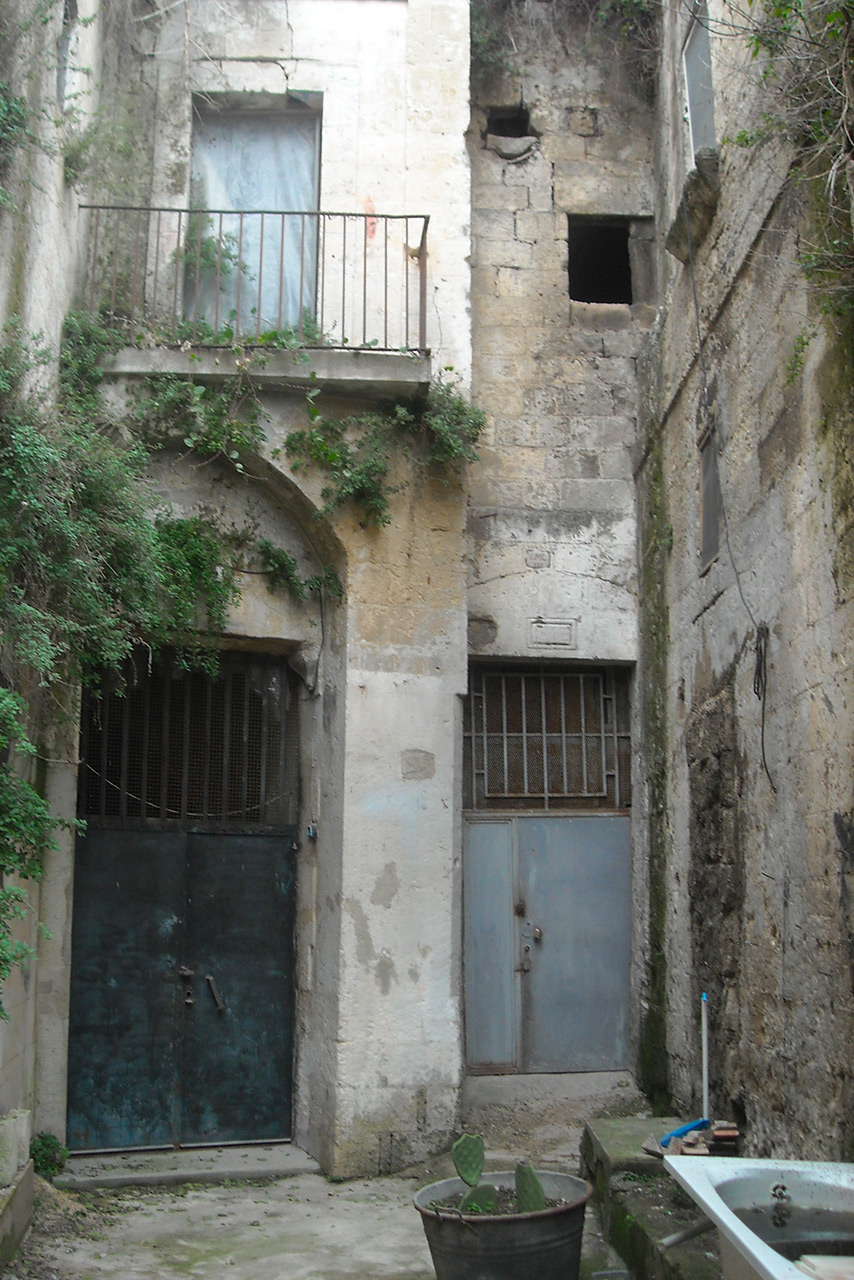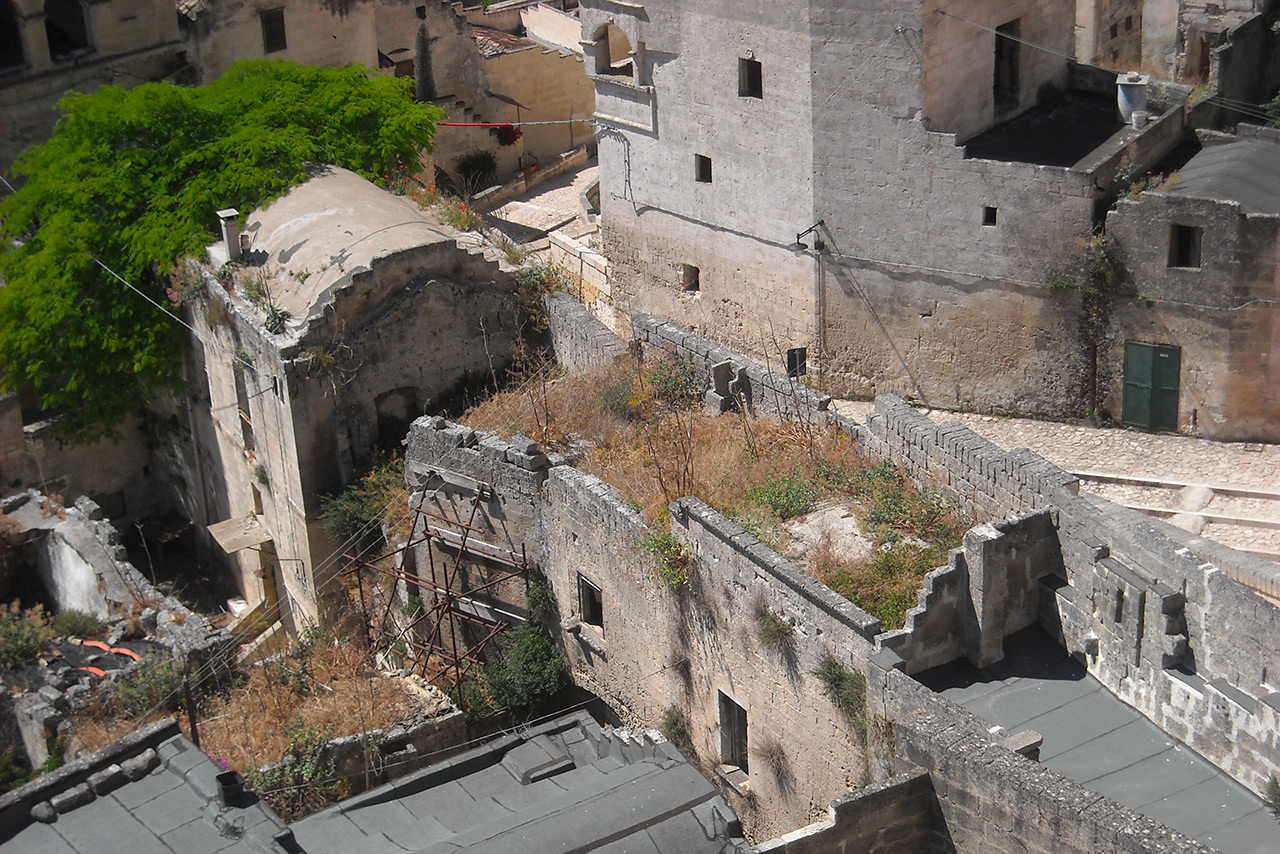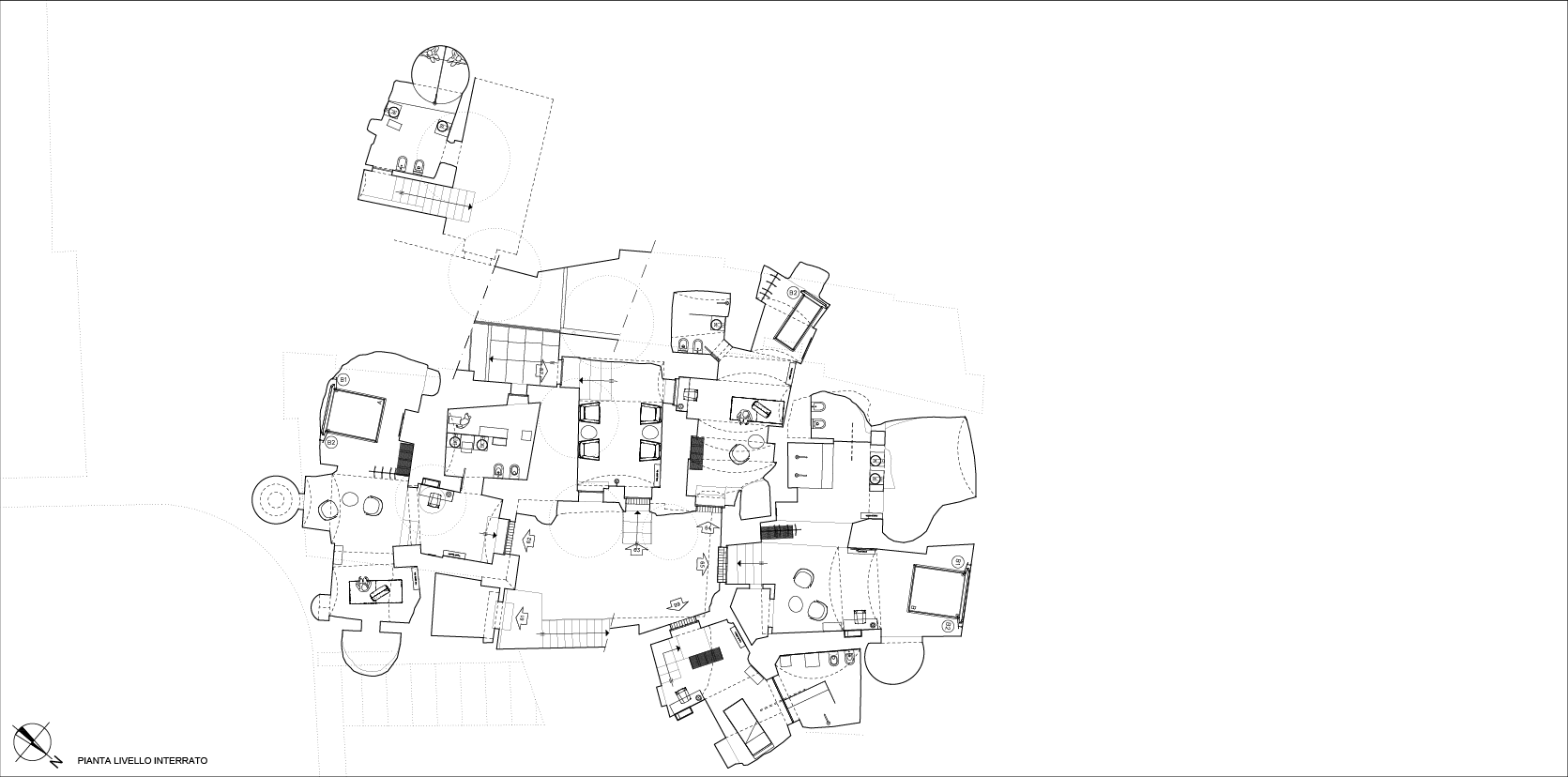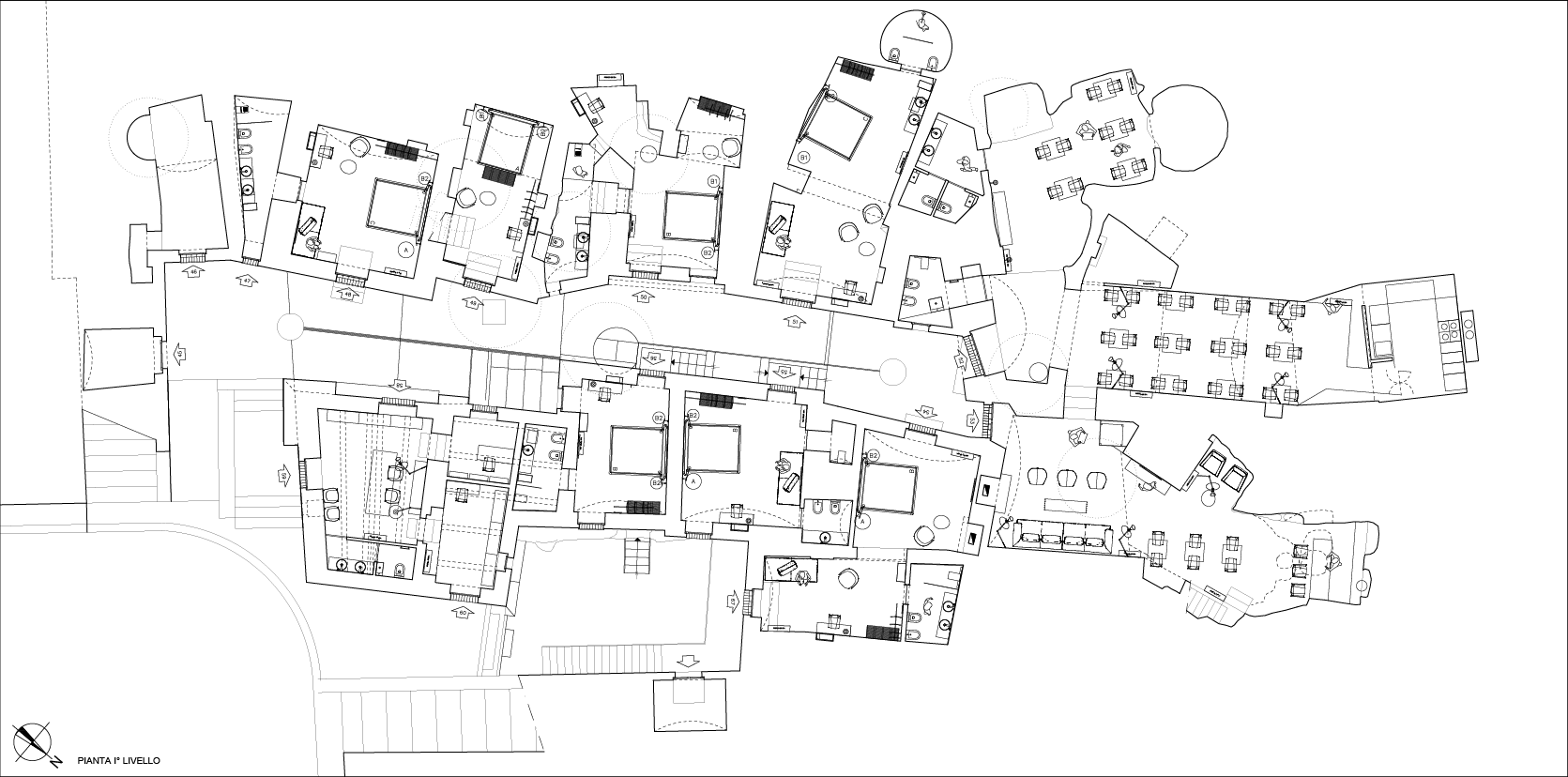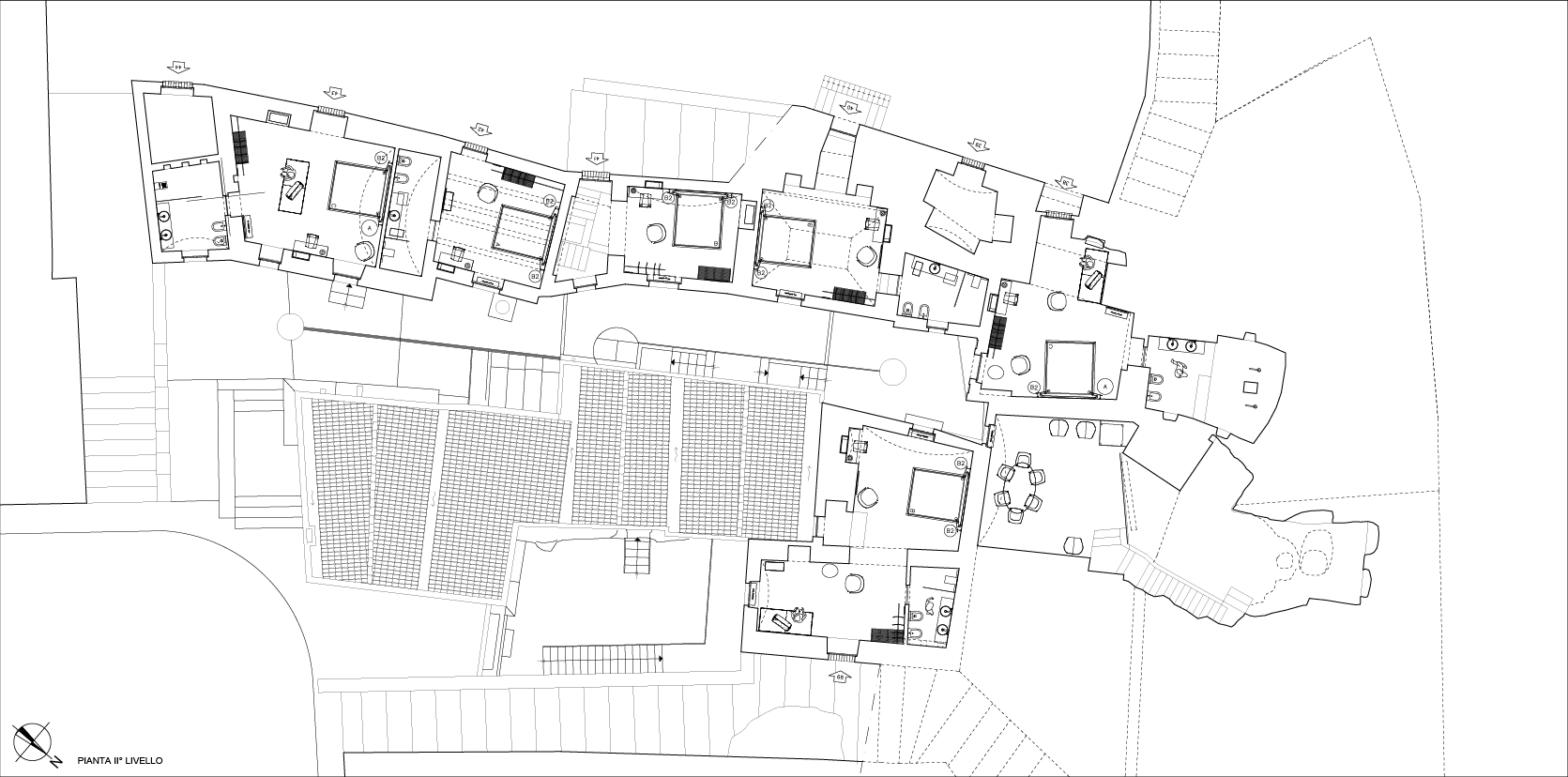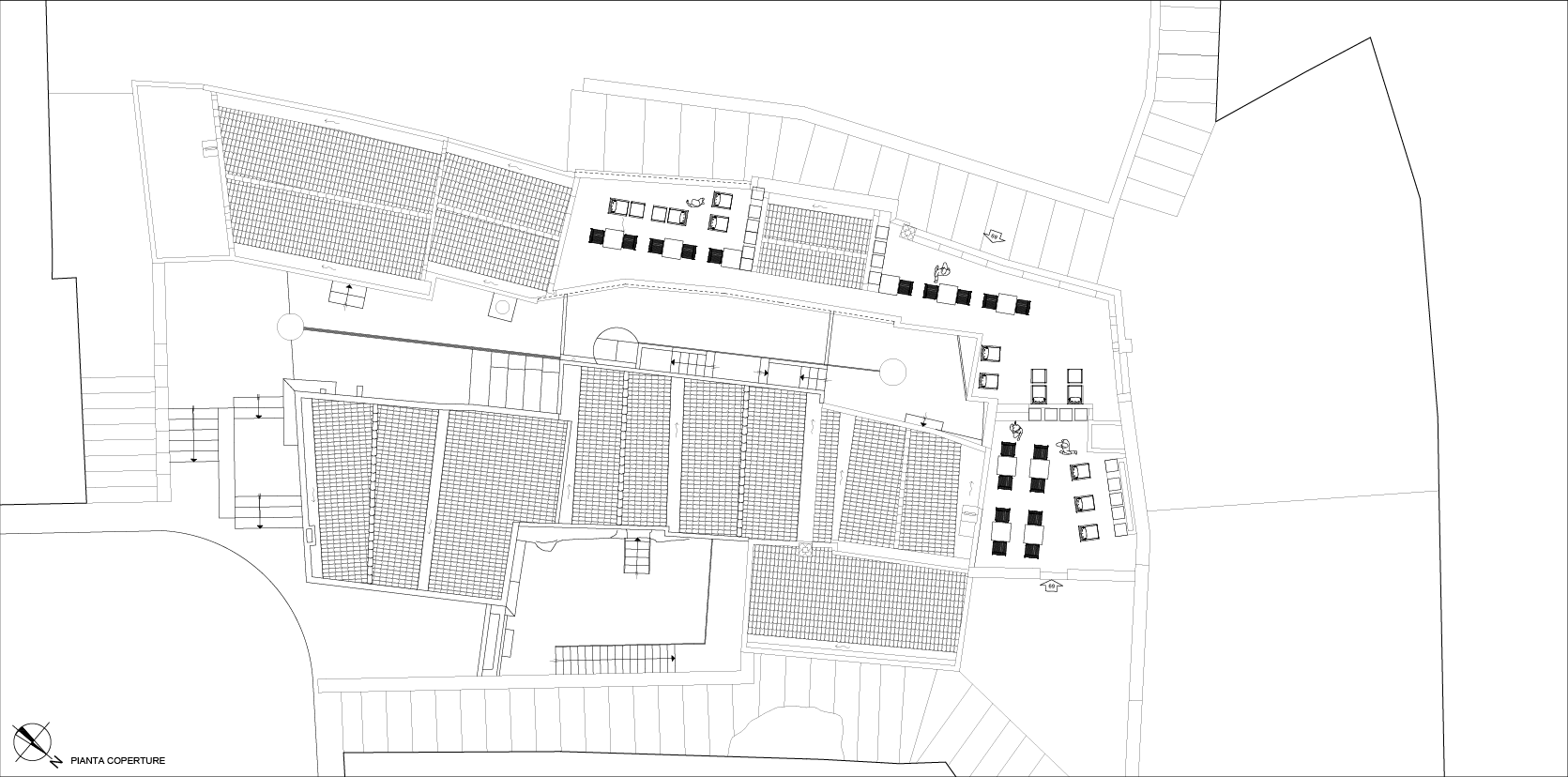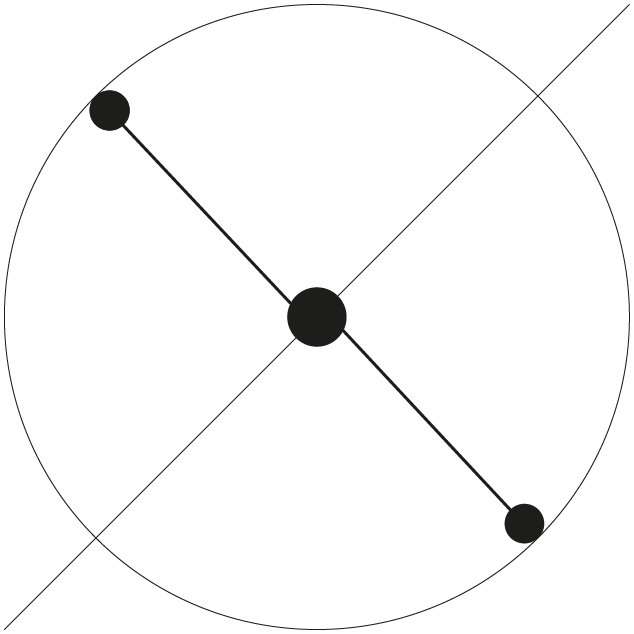Project
Shots of the places, taken in 2010, year of the first draft of the project, evoke only precariousness, collapse, ruins.
After the displacement provided by the special law of 1952 entitled “Restoration of the Sassi of Matera” (“Risanamento dei rioni dei Sassi nell’abitato del comune di Matera”) nature taken possession back of these places, making unrecognisable the urban ecosystem that the hard work of past generation had perfected over the centuries.
The inspiration and enthusiasm behind the project and its realization revolve around the recovery of Sassi cultural landscape, around their components and their reuse in a contemporary key.
The urban morphology refers to the shape of a horseshoe and is articulated on three levels around three courtyards/vicinati which constitute the communitarian matrix of spaces. The whole is a counterpoint of solid and void, excavated and built, a thousand square meters of stories documenting housing and work, a narration of human existence through the centuries.
At the end of the long and narrow courtyard, in the centre of the complex, four hundred years ago in 1610, somebody has celebrated great achievements in society and work on a massive tufa epistyle adorned with acanthus leaves that today mark the entrance to the most important place, the Convivio, where guests start the day by enjoying our breakfast. We are under the Chianella, inside the ancient foggiali, hypogeum rooms for the storage of grains, as documented by the pits at the top of the cave.
The conservation of wheat has determined certain shapes of foggiali, as well as rainwater collection has dug sinuous lines and has made the bell-shaped cisterns’ contours. The rigor of recovery interventions play with these shapes forming a new dialogue with intended use of the scattered hotel. All materials found during the work have been salvaged and reused, from the XVII century cotto sestini, the XVIII century decorated majolica, to the XIX century cementine tiles.
The whole is a great puzzle, each piece traced back to a particular history and all pieces together offer an authentic contact with the place, colours, flavours and with its people.
Arch. Domenico Fiore
transleated by Erica Carmen Dileo


